
Sexy Art Nouveau
Art Nouveau architecture must have appeared like a breath of fresh air amid regimented Haussmannian streets, the eclecticism of Beaux Arts architecture, and centuries of revivals of models from classical antiquity. Art Nouveau flourished only for about twenty years, from 1895 to 1914, the start of World War I, but it unleashed an explosion of creativity in architecture, infused variety into the urban landscape, and introduced the sensuality of sinuous and “whiplash” lines into the architectural syntax.
Department stores of the grands boulevards
Printemps Haussmann
Printemps Haussmann rose from the ashes of its 1881 fire, and its new architecture anticipated Art Nouveau styles. The use of glass and metal, the graceful curvilinear forms, and the colourful terracotta mosaics introduced Art Nouveau elements.
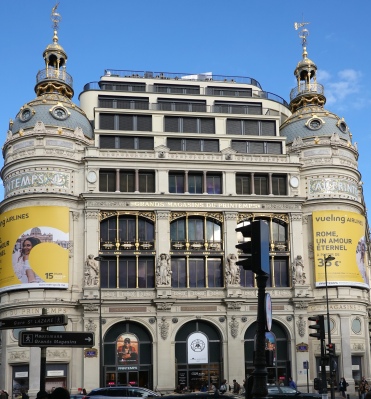
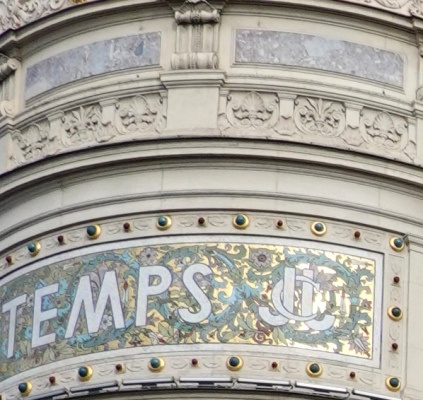
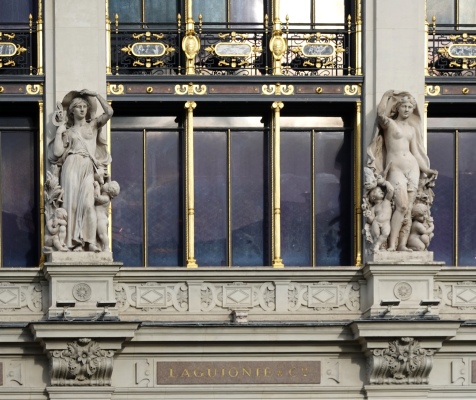
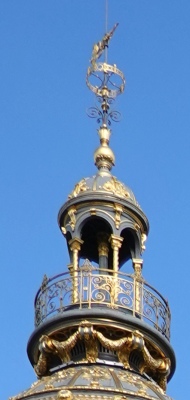
Galeries Lafayette
A set of balconies surrounding the interior atrium of Galeries Lafayette, built during the full flower of Art Nouveau:
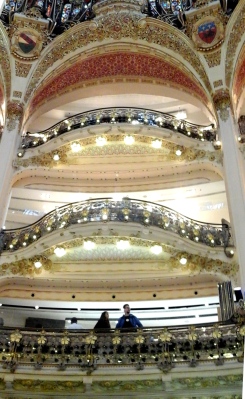
La Tour Eiffel (1889)
La Tour Eiffel was built as the grand entrance to the 1889 Paris Expo, which celebrated the centennial of the French Revolution. With its latticed wrought iron incorporating curved forms, La Tour Eiffel epitomized the technological expression of early Art Nouveau.
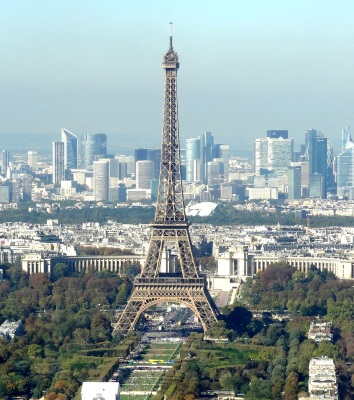
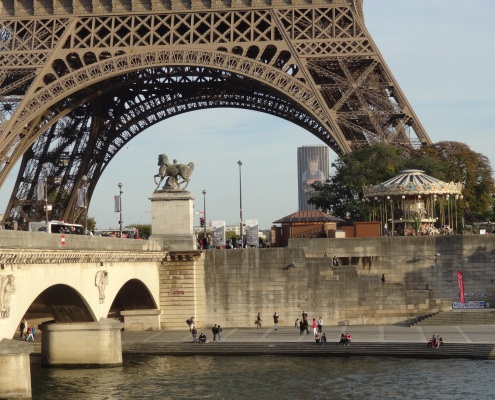
Art Nouveau architects: Lavirotte, Raquin, Guimard
Jules Lavirotte
The Lavirotte Building was built at the time of the 1900 Paris Exposition, an important showcase for the Art Nouveau style. Here is Art Nouveau architecture in full blossom, its rich and varied forms heavily ornamented and utterly original.

Polychrome ceramics boldly enliven the facade of the apartment building.
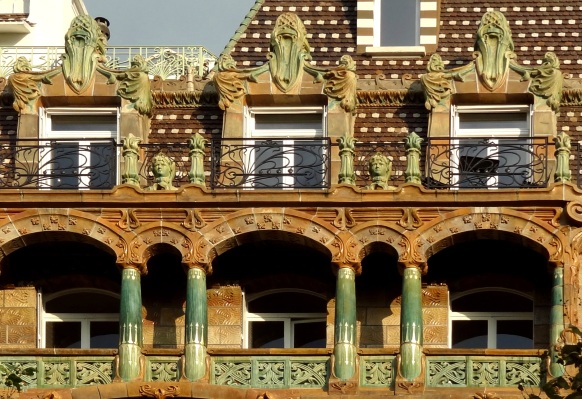
Lavirotte’s exuberant design won a 1901 competition for most original facade in the 7th arrondissement. It’s easily the sexiest facade in Paris, hands down.
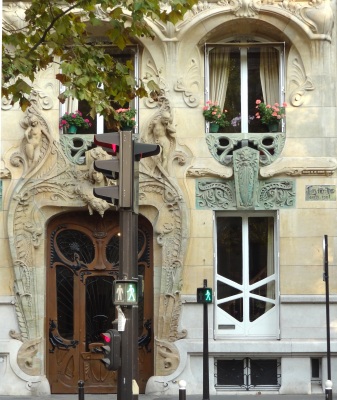
Phallic encoding on the entrance door:

Octave Raquin
Raquin built “Les Arums” in 1900 as a private college.
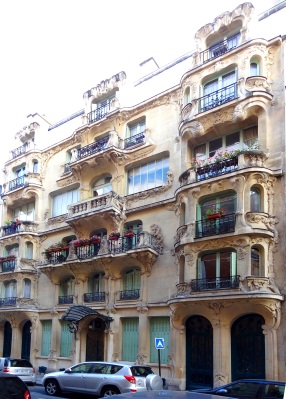
The decoration of the ornate but homogeneous facade derives inspiration from flowers: arums and calla lilies.
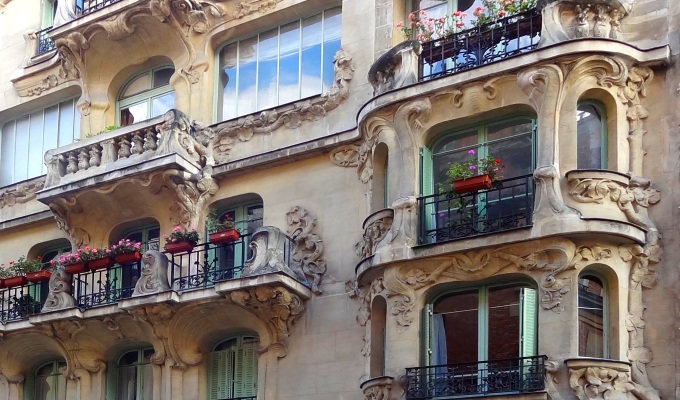
Marquise entrance with ornate wrought iron gate of arums:
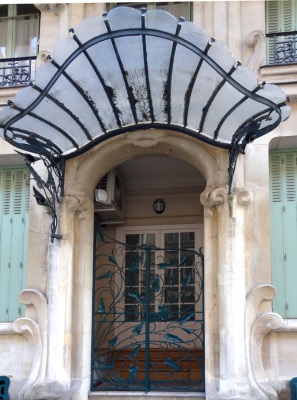
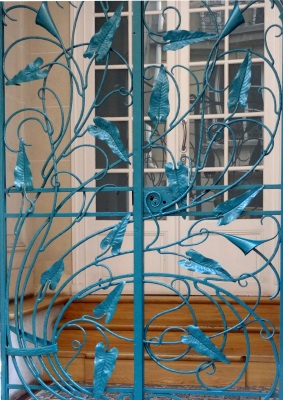
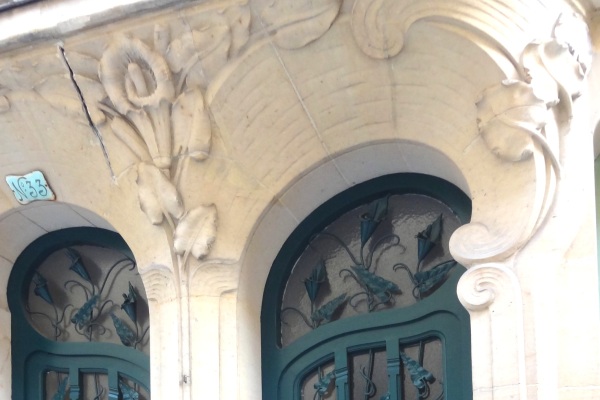
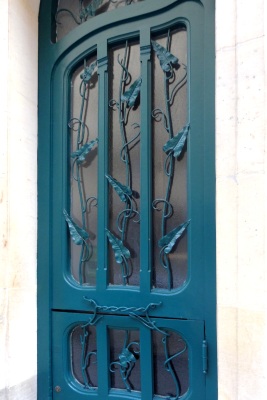
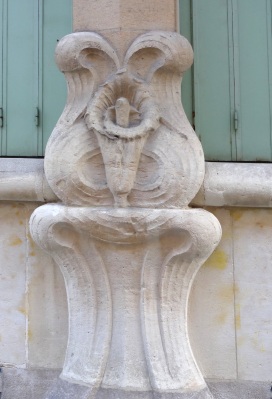
Hector Guimard
Hôtel Guimard
Pioneering Art Nouveau architect Guimard made his debut in 1899 with his Castle Beranger, which won a competition for best new facade. Ten years later came the plainer Hôtel Guimard, the architect’s own residence. The relatively unadorned building allows its subtle curved lines and formal consistency to take center stage. It’s a quieter, stripped-down Art Nouveau.
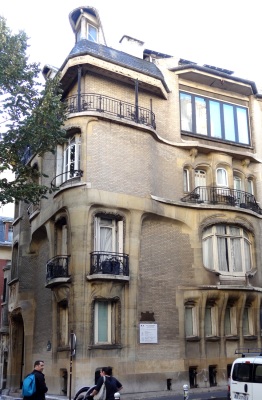
When I was there in 2019, the building was slated for cleaning and restoration.
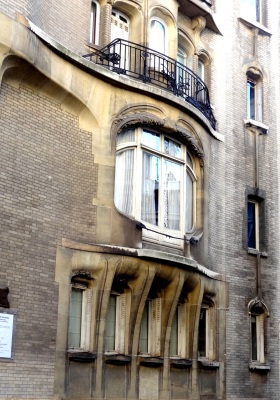
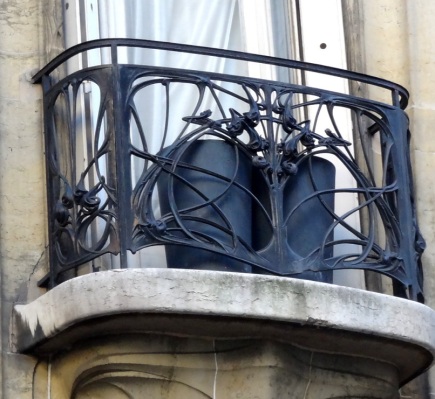
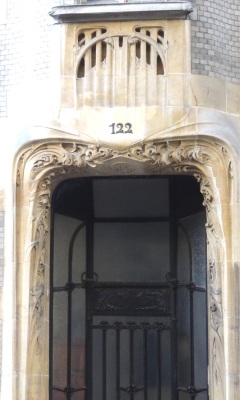
Métro Mirabeau
Many of Guimard’s métro entrances were destroyed. The surviving ones are considered treasures and protected as historical monuments. That sometimes happens when you’re is ahead of your time.
Below: a surviving Art Nouveau entrance at Métro Mirabeau, designed in about 1913 by Guimard. It features escutcheons along the railing, and lamp posts with reddish lights, glowing like alien lily-of-the-valley pods. Over the entrance hangs a “Métropolitain” sign with characteristic font.
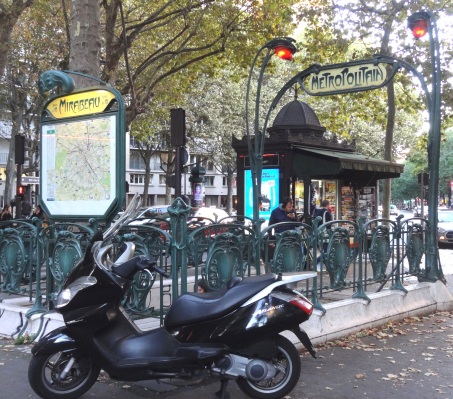
Hôtel Lutetia
Luxury hotel built in 1910 in Art Nouveau style:
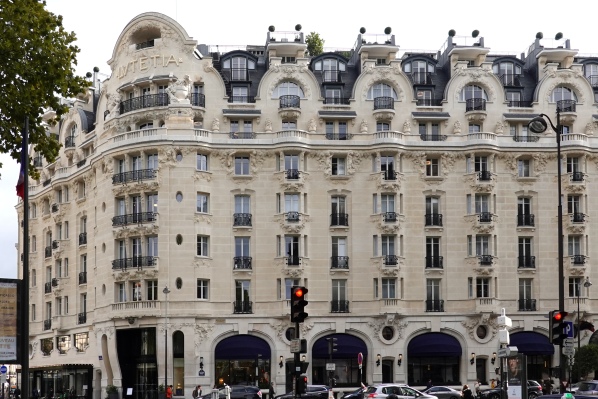
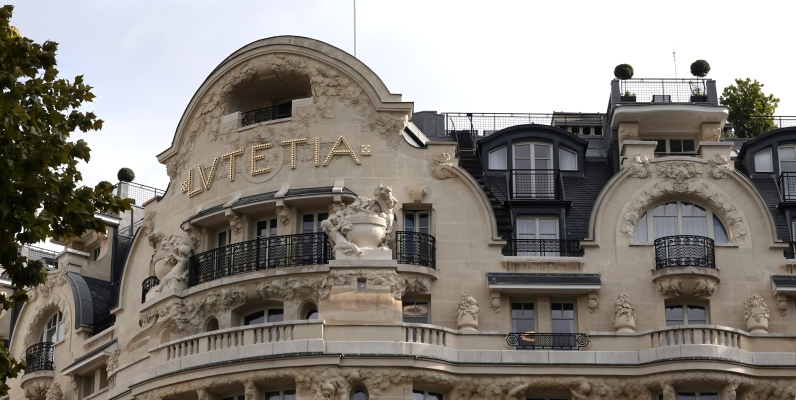
Otherly Art Nouveau
The flowery facade of Rue Froidevaux
This 1929 building for artist studios and residences features late Art Nouveau decoration on the facade:
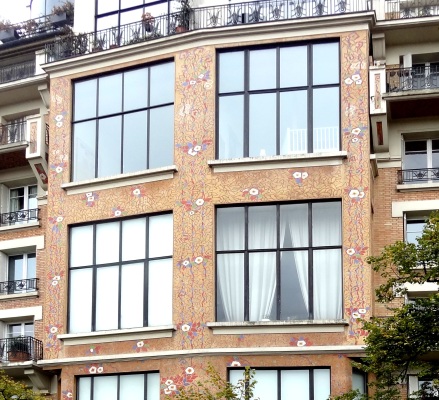
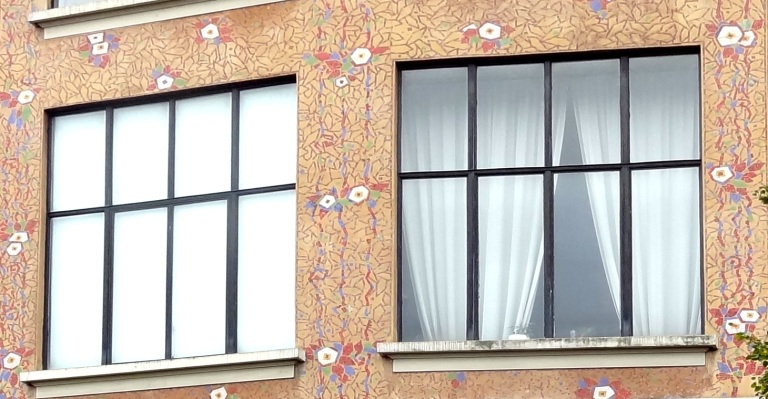
The Building with the Green Balconies
The unusual building below has been described as Art Nouveau. It was built when that architectural movement was in full swing, but it’s an eclectic interpretation of it. The rectilinear green railings display nothing of the characteristic sinulous wrought iron designs, but the building’s curved forms faintly register Art Nouveau. Its presence in the 15th arrondissement is arresting.
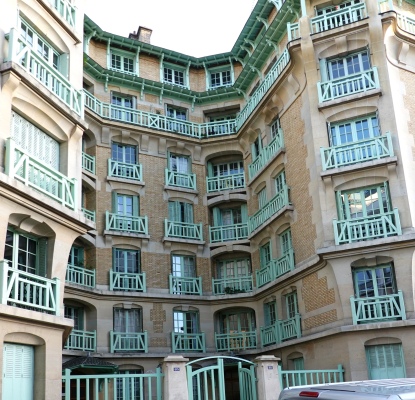
Some Art Nouveau details:

Above: art nouveau bas-reliefs on a building on boulevard Raspail: three ages of life
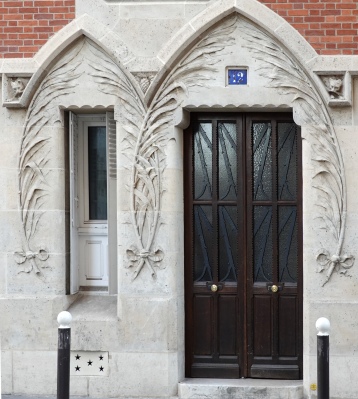
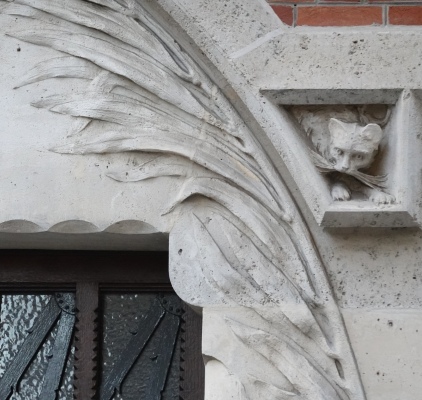
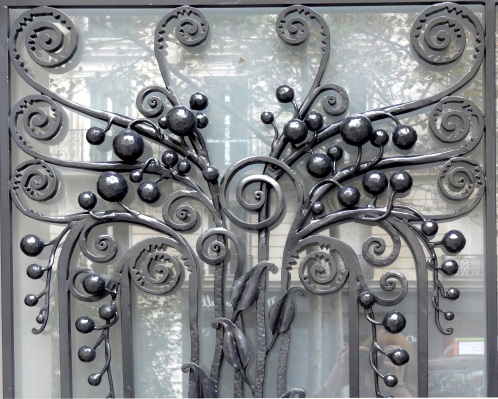
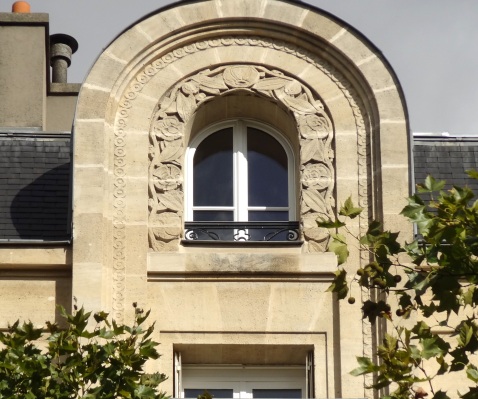
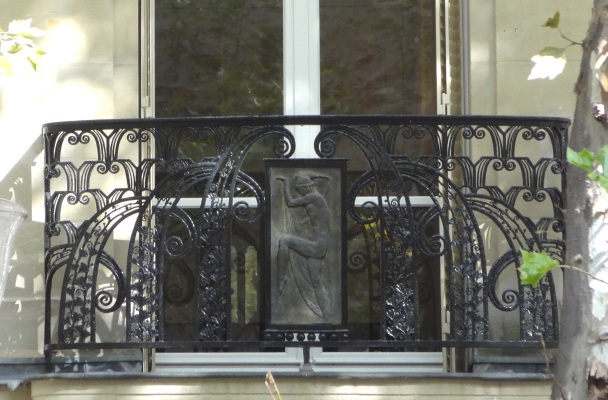
Next: Art Deco
Camille Martin